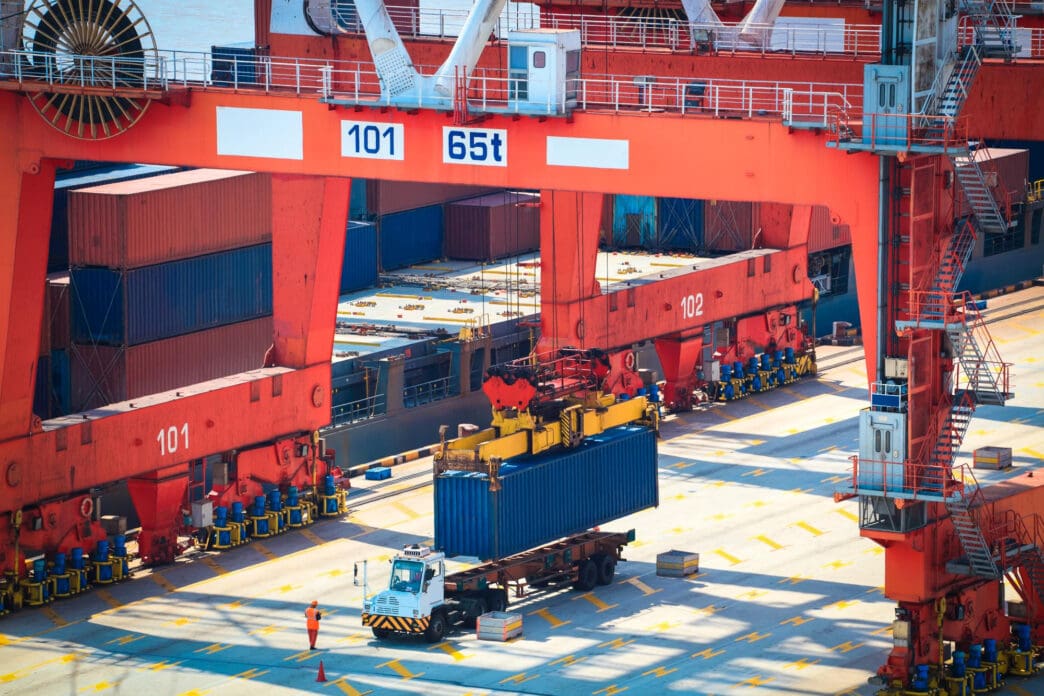Executive Summary
The Story So Far
Why This Matters
Who Thinks What?
China’s export growth rebounded in September, exceeding forecasts, yet renewed trade tensions between Beijing and Washington have heightened concerns over job security and potential deflation in the export-reliant economy. The world’s second-largest economy has actively diversified its export markets this year, aiming to mitigate the impact of President Donald Trump’s 35-percentage-point tariff hikes and keep its GDP growth on track for a roughly 5% target.
However, this strategy faces a significant challenge as President Trump has threatened to re-impose triple-digit tariffs on China. This threat comes in retaliation for Beijing’s recent announcement of sweeping export controls on rare earth minerals, which are critical for various global industries.
Trade Data and Market Diversification
Customs data released on Monday showed China’s exports rose an annual 8.3% last month, outperforming a 6% increase predicted by a Reuters poll. This marks the fastest growth since March and compares with a 4.4% increase in August.
Despite the overall growth, exports to the U.S. fell by 27% year-on-year. Conversely, shipments to the European Union, Southeast Asia, and Africa saw substantial increases of 14%, 15.6%, and 56.4%, respectively.
Xu Tianchen, a senior economist at the Economist Intelligence Unit in Beijing, noted that Chinese firms are actively seeking new markets due to the relative cost advantage of their goods. He added that the U.S. now accounts for less than 10% of China’s direct exports, suggesting that while 100% tariffs would add pressure, their impact might not be as severe as in the past.
Chinese exporters, however, describe the scramble for new market share as a “mad rat race,” which has squeezed profit margins. This has led to cost-cutting measures at home, including staff reductions and wage cuts.
U.S.-China Trade Tensions Escalating
The acceleration in export growth is positive news for China’s still-fragile economy, but President Trump’s latest threat to raise U.S. tariffs above 100% could induce a deflationary shock. Such a move would jeopardize smaller exporters and factory workers’ jobs.
China’s decision to control rare earth and magnet exports, where it holds a near-monopoly, could paralyze global supply chains. Industries from automotive to green energy and aircraft would be significantly affected.
Capital Economics analyst Julian Evans-Pritchard stated that while China’s economy has shown resilience against U.S. tariffs, a deeper rift with the U.S. still presents significant potential downside risks.
Domestic Demand and Imports
Domestically, Chinese consumers continue to limit spending, forcing factory owners to slash prices for overseas buyers. This situation places pressure on Beijing to implement additional stimulus measures to boost household incomes and stimulate domestic demand.
China’s imports grew 7.4% in September, the fastest pace since April 2024, surpassing a forecast rise of 1.5%. Analysts attributed this uptick largely to stockpiling by China, the world’s biggest buyer of commodities.
Steel imports rose again, putting China on track for a record year, while coal purchases reached a nine-month high due to rising prices. Soybean imports hit their second-highest level on record, driven by strong purchases from South America, as Chinese buyers continue to avoid U.S. soybean cargoes.
China’s trade surplus fell to $90.45 billion in September, down from $102.33 billion the previous month and missing a forecast of $98.96 billion.
Outlook and Diplomacy
Wang Jun, China’s vice customs minister, indicated ahead of the data release that China hopes to return to the negotiating table with its U.S. counterparts. Many analysts predict that both Beijing and Washington will work towards de-escalation in the coming weeks, potentially preserving a chance for President Trump and Chinese President Xi Jinping to meet at the APEC summit in South Korea later this month.
Nomura analysts believe that after testing each other’s boundaries, both sides will likely make concessions again, and they anticipate a decent chance of a Xi-Trump meeting. They view this cycle of tension, escalation, and truce as the “new normal” for U.S.-China relations. However, Lynn Song, chief Greater China economist at ING, cautioned that the possibility of miscalculation is always present in this high-stakes dynamic.








